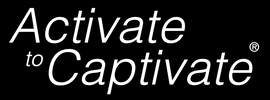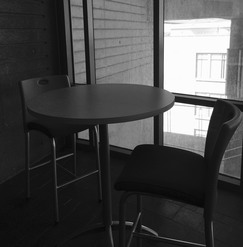|
The best presentations are the ones where you feel the presenter is talking directly to you. Where ideas flow naturally and it feels like an easy discussion. However, many presenters have a hard time making their speeches sound like this. It’s probably because they don’t think about their presentations as conversations. Instead, they think of them as formal events where they talk, uninterrupted, in front of a large crowd. Normal interactions don’t happen under these conditions. Therefore, you must find a way to change things around so you can practice your presentation as a conversation.
1. ENVIRONMENT Practice in an a different environment. Practice giving the full speech on your couch talking to your best friend. Practice in a coffee shop. Practice while you are taking a long walk with a coworker. When you practice, don’t just go through the “talking points” but fully explain each idea, as if you were giving your presentation. Figure out where your voice goes into “automatic” and you stop sounding genuine. Or have your friend point out when it no longer sounds like you are speaking to them, but at them. By changing up the environment, you will start to notice when your tone, pitch and delivery sound out of context. Then practice giving the talk, in that natural way, in the actual space where you will be presenting. Try to bring the “genuine” and conversational tone into the formal environment. 2. VISUALS When you are having a conversation, you are normally telling a story. You are relying on your voice to paint a picture. In presentations, people rely on their slides to tell the story and explain the concept. Instead, practice telling your story without any visuals available. Notice what changes when you have to use your words to make the ideas come to life. Or, try using a whiteboard to draw the visuals as you tell them. By changing up the visuals you usually rely on, you will find more natural ways to convey the information. 3. QUESTIONS In a conversation, people can interrupt you to clarify a point, ask a question or offer thoughts. In a presentation, the speaker is the only one talking and there is no give and take. It is just one voice that continues to speak for an extended period of time. To make the presentation more conversational, practice having a friend ask a question before each slide. Then, answer their question with the information on that slide. You can even put that question in the “presenter notes” section of your talk. That way, you continue to give the information in your talk as if you are having a dialogue with the audience. Summary Switch up your environment, change up your visuals and practice answering questions to make your presentations more conversational. That way the audience will feel more connected to you and your content. Comments are closed.
|
AuthorBri McWhorter is the Founder and CEO of Activate to Captivate. Categories
All
Videos
Archives
June 2024
|
Click to Contact
© 2014-2024 Activate to Captivate, LLC
All Rights Reserved
All Rights Reserved


 RSS Feed
RSS Feed
